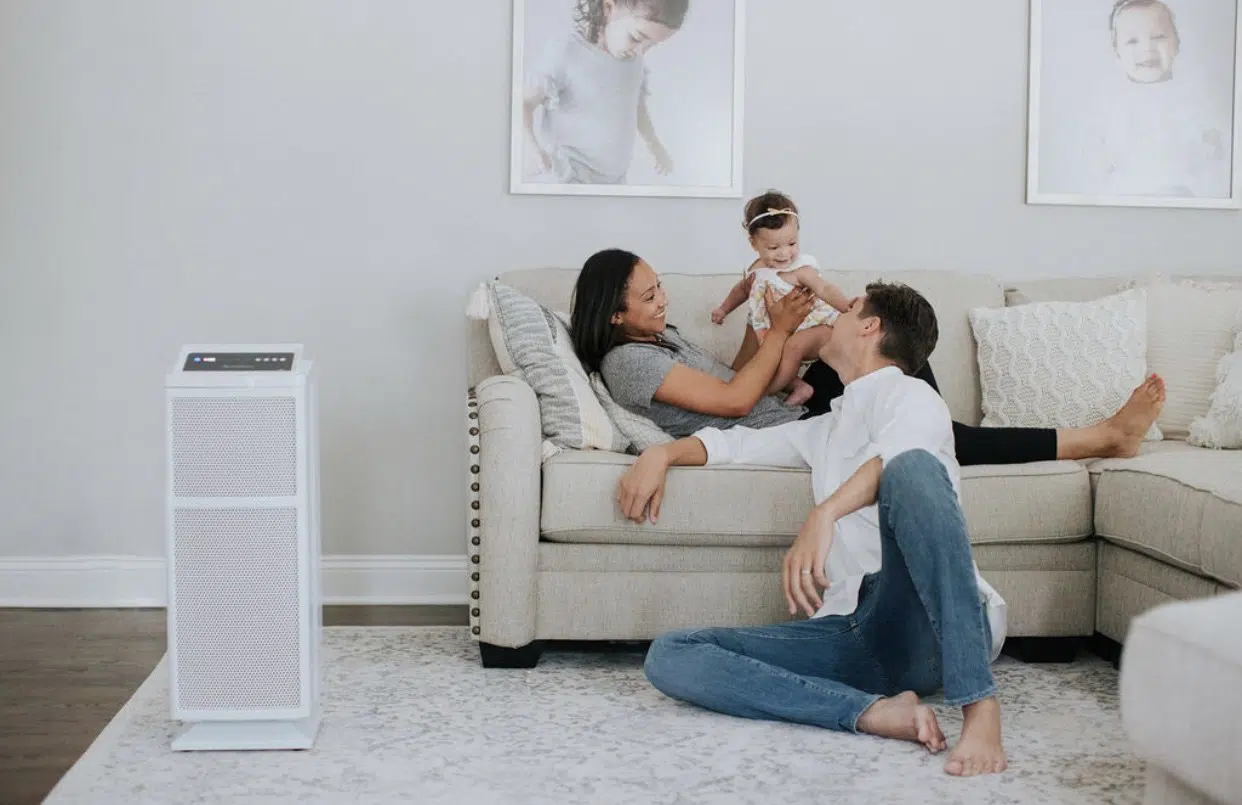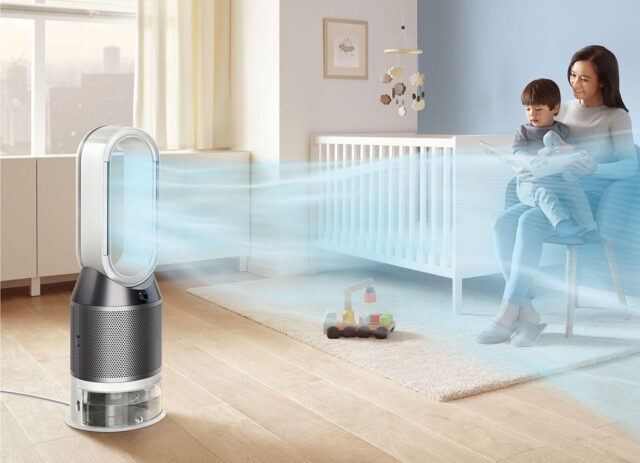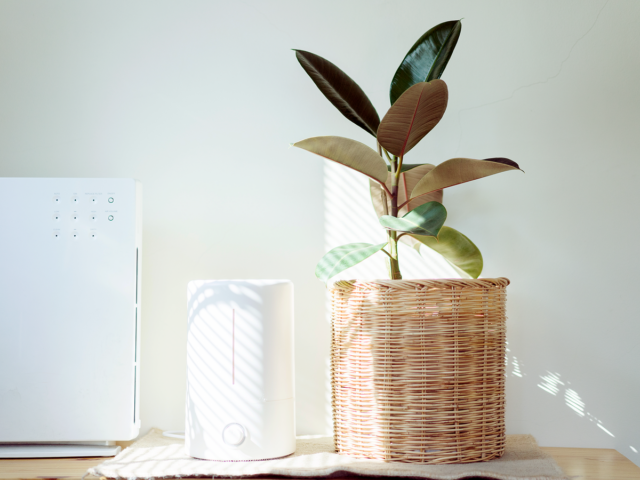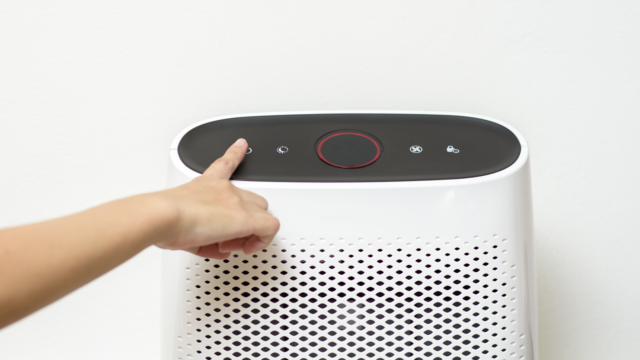
The tragic coronavirus pandemic made many realize what a huge threat “air” can be, or more precisely the viruses, bacteria, fungi, allergens, or dust in it. In Poland, the respiratory system has also been damaged by smog for years. Our lungs are constantly exposed to attacks from the outside, and being able to breathe freely without a mask is becoming a dream. Is there a way to at least in our own home ensure clean, healthy air?
In recent months, millions of people around the world have been dreaming of providing themselves and their loved ones with a safe place to breathe. Locked indoors, often in poorly ventilated rooms, we begin to appreciate a breath of clean, crisp air.
We go outside less often, but that doesn’t mean that smog or pathogenic microorganisms don’t get into our four walls. Fortunately, modern technology offers equipment that efficiently purifies and disinfects the air in the apartment, office, or restaurant.
They do not cost a fortune and significantly protect against the inhalation of pathogens and allergens. They significantly improve the comfort of life, support the functioning of the body and reduce stress. In a room with sterile air, it is much easier to concentrate, relax and fall asleep.
Read the article – best air purifier for 1000 sq ft.
There are quite a few devices on the market that will work very well in a home environment and provide the comfort you dream of. They are efficient, and often mobile, and while eliminating viruses, bacteria, and other microorganisms, they use solutions that are completely safe for those in the sterilized room. Buying them is the surest way to have clean air inside your own home, although you can additionally assist yourself with other means as well.
Sterilizer, purifier, ionizer

A flow sterilizer, purifier, and ionizer are devices whose main task is to make the air we breathe in a room as healthy as possible. How is this accomplished? In a nutshell, several-stage filtration systems are built into each of these machines. Thanks to such complex, multi-stage filtration, the air in the room becomes free of even the smallest microorganisms, not to mention unpleasant odors.
The most important difference between sterilizers and air purifiers you can buy in home appliance stores is that sterilizers kill (through ozonation, ionization, and/or UV-C sterilization) the captured microorganisms. Purifiers are usually limited to keeping them on the surface of the HEPA filter (not eliminated by any agent, they can stay there for a long time and be a danger to humans). Sterilizers, on the other hand, are not experts at trapping dust, pollen, or other solid air pollutants.
When buying a purifier that has a UV-C sterilization option, the difference between it and a sterilizer seems to blur, although most often purifiers are dedicated to strictly domestic use, while sterilizers are usually intended for larger areas and rooms where various medical or beauty treatments are performed. An example of a compact purifier that not only catches dust mites, dust, smog, viruses, fungi, and bacteria but also additionally knocks them out with the help of a UV-C lamp is the Aseptic Tower device. It is ideal for rooms of less than 120 square meters. The even smaller device, which can be confidently installed in the bedroom, is a small-sized air purifier with multi-level filtration at Aseptica Clinic.
The mode of operation and efficiency of both plasma and UV-C sterilizers is similar. In both cases, an agent is generated that destroys the pathogenic microorganism at the DNA level. Plasma does this by generating the appropriate frequency of vibration, while UV-C light does it with an ultraviolet wavelength. Plasma sterilizers as well as UV-C lamps are just as effective, as confirmed by numerous studies. They destroy all fungi, bacteria, and viruses, including influenza viruses and coronavirus (SARS-CoV-2).
How to choose the right air sterilizer or air purifier?

When choosing a device to provide clean air in the house, it is worth considering several parameters. First, look at the CADR factor, which shows the filtering efficiency. This parameter explains how much clean air goes from the purifier/purifier into the room in one hour.
It is essential to remember that too much airflow and a UV lamp with insufficient power will not guarantee the clean air in the house that you want. It is also a mistake to buy devices that have no lamps, only UV-C diodes, or have lamps, but a lamp with a power of 6-10W. Such solutions completely fail to do their job.
When reviewing various models of purifiers and sterilizers, it is a good idea to pay attention to whether they have the function of self-monitoring the state of the air and start when its quality deteriorates, and information about the need to change the filters (as in the air purifier with multi-level filtration and UV- C lamp Aseptica Tower). When choosing equipment for an apartment or house, the level of noise it emits is also important. Quiet operation provides comfort and relaxation for household members. Specialized air purifiers produce sounds on a scale of 20 to 70 dB.
Before buying an air purifying machine, it is also a good idea to pay attention to the tests and certifications given to a particular model. It’s a good idea to read detailed statements on the effectiveness of the entire device and individual components. It’s also safer to look for equipment in specialized stores offering medical devices and talk to the specialists working there, rather than shopping in chain stores with household appliances or stores of Chinese suppliers.
Daily use of the equipment will also be made easier by its size. If a device with larger dimensions and a weight of more than a dozen kilograms is necessary, it is better to opt for one that has good-quality casters and convenient handles for moving.

Homemade ways to help take care of clean air
Although home methods will not succeed in destroying the pollutants and microorganisms present in the air, they can be used as an additional “precaution.” One of them, for example, is to follow the rule that we do not open windows during peak traffic hours and on days when a smog alert is issued. You can also bring in plants that naturally help clean the air, while pleasing the eye and providing soothing greenery. Such health-promoting flowers include dracaena, horsetail, or multi-floral chrysanthemum.







